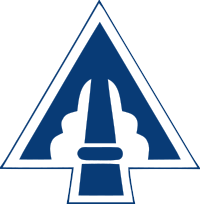Lineage
Constituted 9 January 1944 in the Army of the United States as Headquarters and Headquarters Company, XXII Corps. Activated 15 January 1944 at Fort Campbell, Kentucky. Inactivated 20 January 1946 in Germany. Allotted 12 July 1950 to the Regular Army. Redesignated 5 January 1966 as Headquarters and Headquarters Company, II Field Force. Activated 10 January 1966 at Fort Hood, Texas. Redesignated 15 March 1966 as Headquarters and Headquarters Company, II Field Force, Vietnam. Inactivated 3 May 1971 at Fort Hood, Texas. Redesignated 2 September 1982 as Headquarters and Headquarters Company, XXII Corps.
This page is based on this
Wikipedia article Text is available under the
CC BY-SA 4.0 license; additional terms may apply.
Images, videos and audio are available under their respective licenses.

